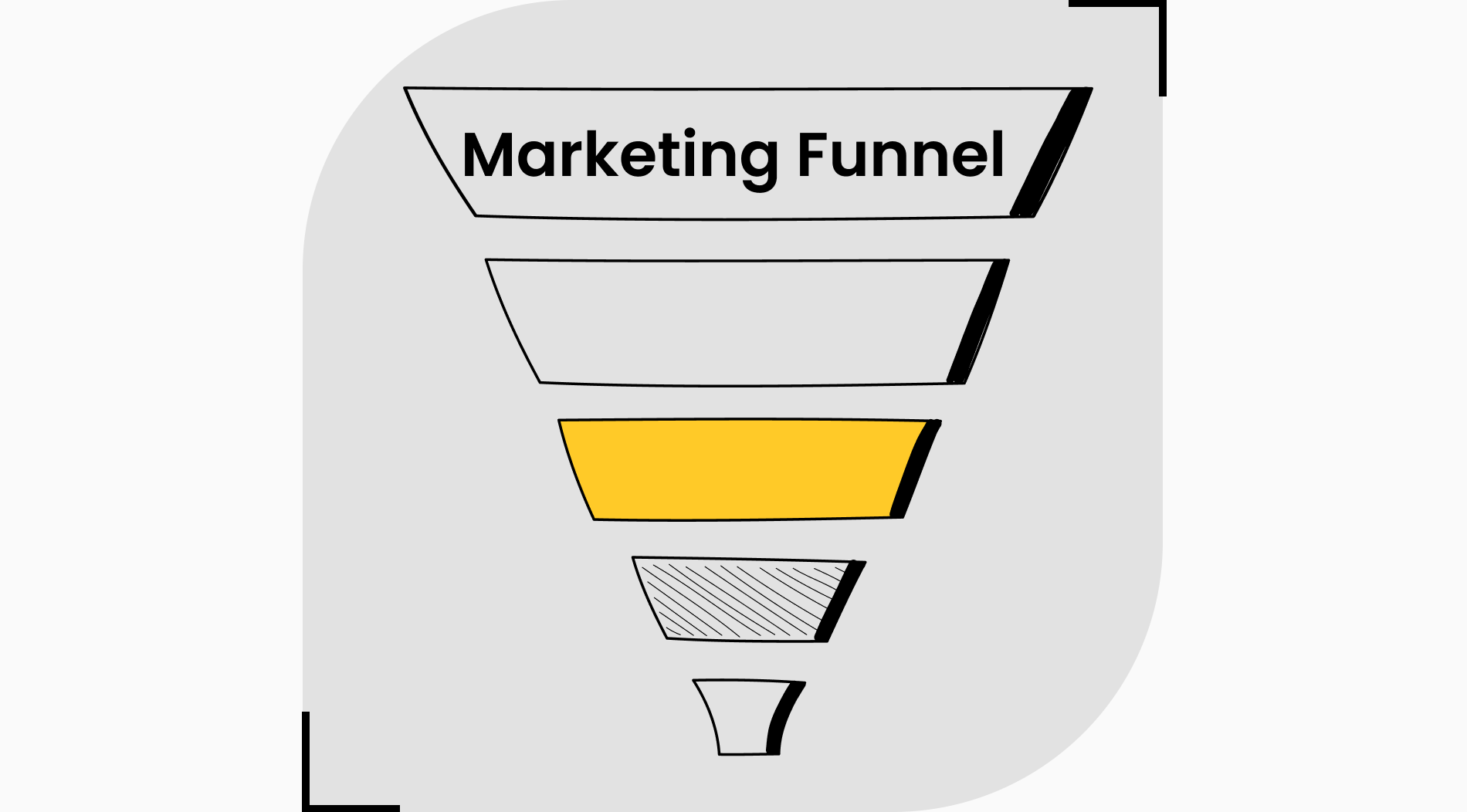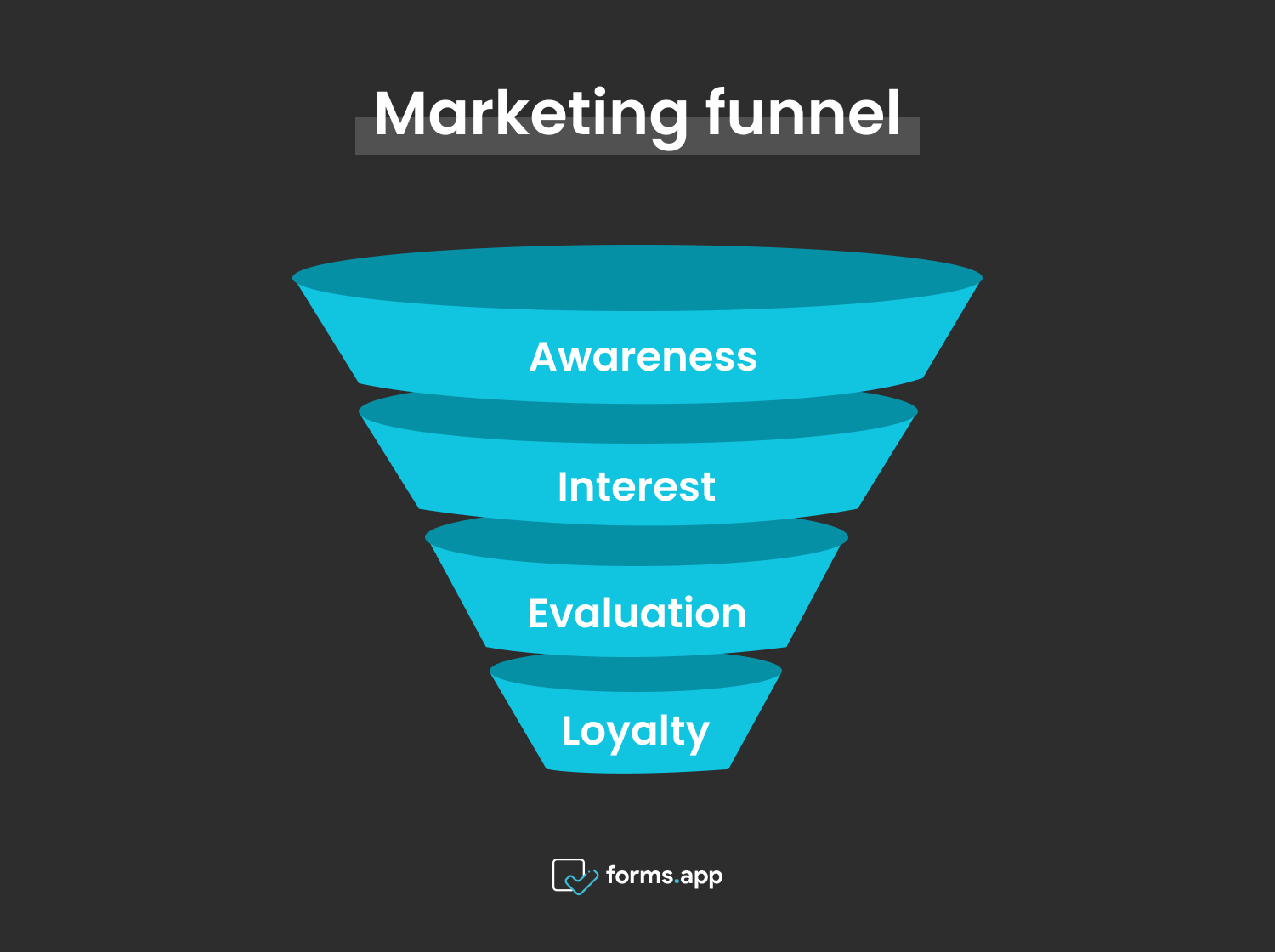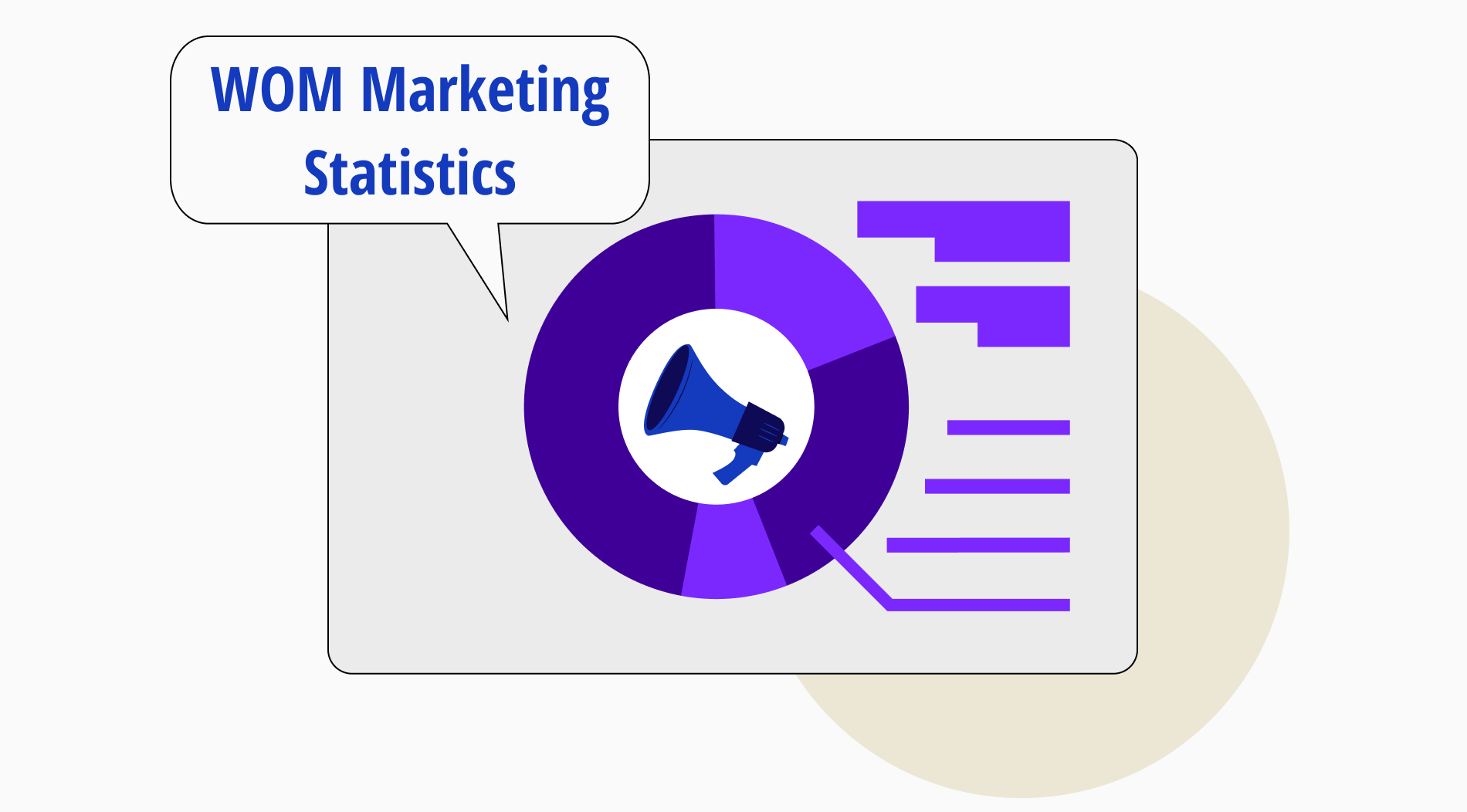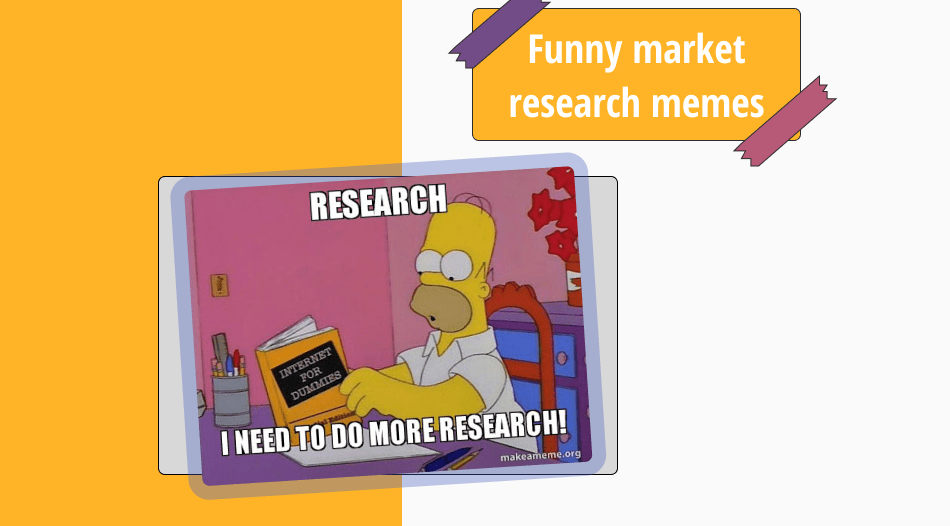
Are you looking for a powerful marketing tool? A marketing funnel can help you discover your business's potential. It allows you to accompany potential customers who know nothing about your company on their journey to becoming buyers. So, you can increase your company's recognition and sales by creating funnels that suit your needs.
In this article, we talk about what a marketing funnel is and why it is essential. We examine the marketing funnel examples in detail. You can also learn how to adapt this marketing model to your own business and frequently asked questions about the model. So, let's start by understanding what a marketing funnel is.
What is the marketing funnel?

A marketing funnel is a multi-stage process that guides potential customers from learning about a product to purchasing it.
The marketing funnel stages are based on the awareness, interest, desire, and action that includes (AIDA) model. According to the model, people first become aware of a business, service, or product and then gradually begin purchasing. Therefore, your target audience narrows as your potential customers' purchasing process progresses. The funnel shape also represents this narrowing.
Why the marketing funnel is essential?
You can use various methods to grow your brand, expand your goals, and increase your sales. The marketing funnel model can help you conduct effective strategic marketing planning and campaign processes. It is also a valuable tool for creating brand awareness. Below, we have listed a few of its benefits:
- By taking advantage of the marketing funnel, you can increase the awareness of your products or services to your potential customers.
- It allows you to reach more potential customers than your competitors in the buyer’s journey.
- It helps you gain more loyal customers by increasing customer satisfaction.
- You can better understand your customer's expectations and needs and offer personalized services and experiences that meet these needs.
- It allows you to use your marketing strategies more effectively and create content in line with customer expectations.
- It helps your customers guide their purchasing behavior and allows you to increase your sales.
The marketing funnel model & examples
According to the marketing funnel model, for customers to purchase a product or service, they must be aware of the product; that is, they must know the product. Then, they must evaluate the product and be interested in it. Then, the desire to buy occurs, and the purchase takes place. Below, we explain these stages of the funnel in detail with their examples:

Marketing funnel
1. Awareness
The awareness stage is the top of the funnel and the moment when potential customers first learn about or hear about your product. It is also the first stage in which purchasing behavior occurs. For customers to purchase a product or service, they must first be aware of it.
For example, the moment you see a product or service in an advertisement or a market is an awareness stage. Another example of this stage is when you first hear about a product or service or receive advice about a product or service from a friend.
2. Interest
Your potential customers are now aware of your product, which means you have brought it to customers' attention. But the important thing is that you can hold this attention. It is the stage where existing customers decide to learn more about products and express interest. Therefore, the content marketing you present to them should keep them interested and attentive.

💡At this stage, blog posts created by the sales team containing information about your product's benefits can be beneficial. You can also use marketing surveys to measure satisfaction with product features and content.
For example, if a product's packaging caught your attention or you liked an outfit, you have become aware of that product. Then, you start to consider its ingredients. What directs your purchasing decision is whether the product's contents and features appeal to you in the sales process.
3. Evaluation
The evaluation stage is the middle stage of the middle funnel, where you attract customers' attention. At this stage, customers need more resources and case studies about the product they are interested in. They are interested in whether your business is trustworthy or not. They look for a resource that supports the services they offer.
For example, you are a customer buying a phone, and the product is your awareness. Based on this assumption, you need a user experience based on the product you are interested in. It is your product evaluation phase. As a result of the evaluation you make at this stage, your customers move towards the decision stage in their purchasing journey.
4. Loyalty
This stage is the final lead generation and pain point stage at the bottom of the funnel. Potential customers decide to purchase your product or service based on their evaluation. Purchasing behavior occurs, and customers move towards becoming loyal customers at the level they are satisfied with.
If we use the phone example again, you have gained awareness of the product's existence. You were interested in the product and needed to learn more about it. Then, you consulted user experiences to evaluate the product. Afterward, you decide to purchase the product based on your evaluations. This stage is considered the action stage in the marketing funnel.
How do you use it for your business?
The marketing funnel is the process that extends from your customers' initial introduction to your products or services to their purchasing behavior. If you want to use this process effectively and profitably for your business, follow the steps below and create your marketing funnel template. Thus, you can turn your potential customers into loyal customers and buyers.
1. Create effective promotion strategies to increase awareness
If you want the marketing funnel model to be effective for your business, start with the first step of the funnel, which is creating awareness. You should present your marketing campaign in various types to attract customers' attention. Social media campaigns, advertisements, sales promotions, and content marketing can benefit you.

💡Also, you should pay attention to your marketing campaign as reliable, exciting, and descriptive.
2. Create engaging content for your products
After creating awareness among your potential customers, you only need to create an exciting and valuable content plan. You can increase awareness of your services through tools such as online platforms or special events. Customers become interested in your product's features and benefits at this stage. Therefore, the more you strengthen your content strategy, the more successful you can be.
3. Understanding and meeting customer expectations
Understanding and meeting customer expectations is a guide for the evaluation phase, which is the third man of the marketing funnel. At this stage, the potential customer directs the purchasing decision based on user experiences. Therefore, it is essential to achieve maximum satisfaction by meeting your customers' needs and requests.

💡Also, if you aim to develop an effective marketing strategy that is customer-focused in every sense, you can benefit from the 4Ps of marketing.
4. Set the best price you see for your products
Another factor that affects the purchasing behavior of your potential customers is the price you consider your products worth. Determining your product's position in the market and the best price for your service guides your potential customers' purchasing decisions. When pricing your product, you should examine new market demands, competitors' prices, customer value, and costs.
5. Choose the proper distribution channel for your product
Make your product available to a broad audience through online platforms, retail stores, and special events. Choosing the appropriate distribution strategy helps you effectively target customers. So you can make your products more accessible and stand out from your competitors.
6. Adapt to the changing and developing market
Market conditions do not have a stable structure. Customer expectations and competitive environments are constantly changing. As your market share increases and your business grows, you need to update your strategy continually. It will create a more prosperous future for your business and stimulate growth.

💡You can also develop a plan that prioritizes customer service and relationships by creating a digital marketing funnel using marketing tools for your digital marketing strategies.
Frequently asked questions about the marketing funnel
The marketing funnel can help you create an effective marketing campaign that meets customers' needs and wants. It also allows you to create awareness and increase your business's sales. Below, we have included frequently asked questions and answers about the marketing funnel for you to read and learn more.
Die vier Stufen des Marketingtrichters sind Bekanntheit, Interesse, Erwägung und Loyalität. Nach diesem Modell muss ein potenzieller Kunde, um loyal zu werden, zunächst auf das Produkt aufmerksam werden und sich dafür interessieren. Dann sollte aufgrund der Bewertungen der Wunsch nach einem Kauf entstehen.
Im Geschäftsleben ist ein Trichter ein Prozess, der die Kaufreise des Kunden darstellt. Dieser Prozess beginnt mit der Wahrnehmung potenzieller Kunden und endet mit deren Kauf. Die visuelle Form des Trichters drückt auch diese sich verengende Zielgruppe aus.
Die Trichteranalyse im Marketing bezieht sich auf die Bewertung des Prozesses potenzieller Kunden von der ersten Stufe, der Bekanntheit, bis zur letzten Stufe, der Kaufphase. In jeder Phase werden die Abbruchpunkte und die Bereiche, in denen die Kunden aus dem Trichter herausfallen, ermittelt und die Gründe dafür untersucht.
Ein Marketing-Trichter ist nicht als eigenständige Strategie gedacht, sondern als wertvolles Instrument, das Ihnen hilft, Ihre Marketingstrategien zu verfeinern und zu verbessern. Er bietet einen umfassenden Rahmen, durch den Sie den potenziellen Kunden in jeder Phase verstehen können.
Der Einkaufstrichter ist auch als Marketingtrichter bekannt. Dabei handelt es sich um ein Marketingmodell, das die Phasen umfasst, bevor potenzielle Kunden ein Kaufverhalten an den Tag legen. Der Trichter hilft Ihnen, Markenbewusstsein zu schaffen und den Umsatz zu steigern. Er ermöglicht es Ihnen auch, Schwachstellen im Kaufprozess Ihrer Kunden zu erkennen und zu beheben.
Key points to take away
The marketing funnel is a journey that starts with creating brand or product awareness and ends with realizing purchasing behavior. A better way to understand this is to remember that we are also customers. If you want to use the marketing funnel effectively, you can think like a customer and a marketer.
In this article, we talked about what a marketing funnel is and why it is essential for businesses. We also examined the stages of the marketing funnel with examples. You can also read and learn how to adapt the marketing funnel to your company and see frequently asked questions about the model.
Işılay is a content writer on forms.app. She is passionate about advertising. This passion comes from the fact that she likes to make things interesting for people. She loves reading and writing. Işılay specializes in marketing, survey types, and program management.



 6 min lesen
6 min lesen

